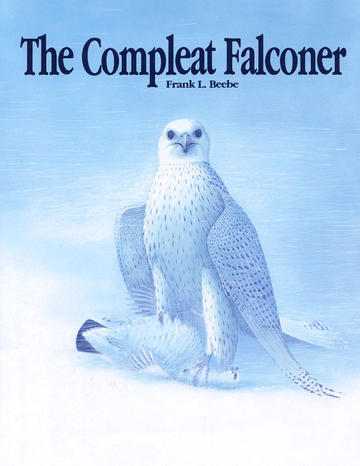About BC Books Online
BC Books Online was created for anyone interested in BC-published books, and with librarians especially in mind. We'd like to make it easy for library staff to learn about books from BC publishers - both new releases and backlist titles - so you can inform your patrons and keep your collections up to date.
Our site features print books and ebooks - both new releases and backlist titles - all of which are available to order through regular trade channels. Browse our subject categories to find books of interest or create and export lists by category to cross-reference with your library's current collection.
A quick tip: When reviewing the "Browse by Category" listings, please note that these are based on standardized BISAC Subject Codes supplied by the books' publishers. You will find additional selections, grouped by theme or region, in our "BC Reading Lists."
 Enlarge Cover
Enlarge Cover
A veritable how-to of Frank Beebe's lifetime experience. Included are plates of 32 original paintings and more that 100 illustrations and drawings. What is Falconry? Really it is just bird watching, although a rather dramatic, specialized, glamorized, and historical kind of bird watching. It involves the taking of a predatory bird into the same kind of familiar, loosely controlled relationship with man as is so well known and so commonplace with a dog or a horse; then, with the relationship established, going out hunting in the company of that predatory bird in a partnership in which the bird is the primary hunter and the human plays the lesser part. The human becomes a bird watcher or, if involved, in the menial capacity of a bird dog to flush quarry or as an assistant in subduing quarry already taken. It is an ancient, honorable, and rather humbling relationship, as old in time as that of man and dog or man and horse. With the exception of eagles, most of the birds involved are smaller than the most ordinary house cat or Pekinese dog and are about as dangerous to people. They are accordingly much less dangerous than any ordinary-sized dog and infinitely less dangerous than is the smallest pony. Their acquisition and their use, therefore, needs no more in the way of imposed control than does the keeping of the most inoffensive dog or cat. This book is about falconry. It deals with the acquiring and the care, control, and training of the kinds of raptorial birds most suited to this ancient relationship and also, as far as is now possible, describes and identifies the birds of falconry. Of the determined and devious twenty-year efforts, extending from 1964 to 1987, by nature preservationist groups and government agencies to control, constrain, institutionalize, and finally to simply criminalize falconry, this book will contain only enough to orient a newcomer. Some of this had to be included, somewhat reluctantly; it is highly condensed and closely edited to allow some comprehension of why and how contemporary falconry has become so different from its traditional past as to require a new book with quite different priorities and orientation than heretofore. The training procedures I propose in this book differ significantly from the traditional procedures reiterated in all previous books on falconry and are especially oriented toward the training of these domestic hawks and falcons. Because they are essentially man made, these birds come to the falconer not only devoid of fear and of hunting experience but also devoid of those subtle disciplines imposed by natural selection with which the traditional procedures were, by trial and error, so perfected to cope.


